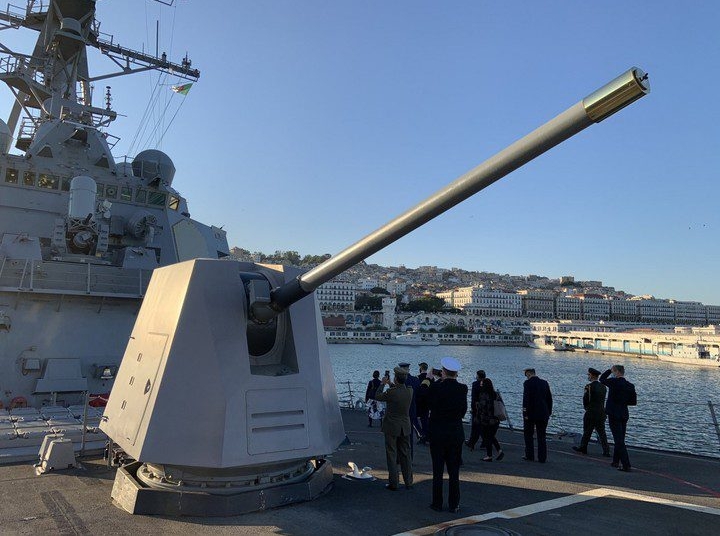A United States Arleigh Burke guided-missile destroyer USS Roosevelt (DDG 80) conducted a port visit in Algiers, Algeria on October 18.
“Algeria plays a central role in the security of the Mediterranean,” said Rear Adm. Michael Baze, director of maritime headquarters, U.S. Naval Forces Europe and Africa. “We look forward to strengthening our maritime ties with Algeria to advance our mutual interests in combatting malign activity on Africa’s Mediterranean coast.”
Roosevelt, on its first patrol in U.S. Sixth Fleet, conducted maritime security operations off the North African coast.
This visit demonstrate the U.S. Naval Forces Africa’s steady effort to build global maritime partnerships with African nations in order to improve maritime safety and security in the region.
“The U.S.-Algerian partnership is marked by deep mutual respect,” said U.S. Chargé d’Affaires to Algeria Gautam Rana. “Both sides are working together to learn from one another, and we cooperate together closely to encourage stability and prosperity in the region.”
Roosevelt’s visit is the latest in a series of engagements with Algeria. U.S. Army Gen. Stephen Townsend, commander of U.S. Africa Command, met on Sept. 23 with Algerian President Abdelmadjid Tebboune, in Algiers, where the two discussed regional security issues and engagement opportunities. On Oct. 1, U.S. Secretary of Defense Mark Esper met with President Tebboune, discussing expanding military cooperation between the two countries and the threats from violent extremist organizations in the region and beyond. Secretary Esper’s visit marked the first visit to Algeria by a sitting secretary of defense since 2006.
Roosevelt, outfitted with the Navy’s most recent Advanced Capability Build technology and software upgrades, integrates its weapons and sensors to include Cooperative Engagement Capability; Evolved Sea Sparrow Missile; Mk 15 Close-In Weapons System Block 1B; and the Mk 41 Vertical Launching System, capable of supporting Standard Missile (SM) 3 and newer variants. These capabilities vastly increase the sea-based Ballistic Missile Defense force structure and contribute to NATO’s robust integrated air and missile defense (IAMD) architecture.
As the first Flight IIA forward-deployed Naval Forces-Europe (FDNF-E) destroyer to join U.S. Sixth Fleet, Roosevelt is deployed with two embarked MH-60R Sea Hawk helicopters, which increase its surface and anti-submarine warfare capabilities.
Roosevelt conducts operations in support of U.S. national security interests in the U.S. Sixth Fleet area of operations. U.S. Sixth Fleet conducts the full spectrum of joint and naval operations, often in concert with allied and interagency partners, in order to advance U.S. national interests and security and stability in Europe and Africa.”




